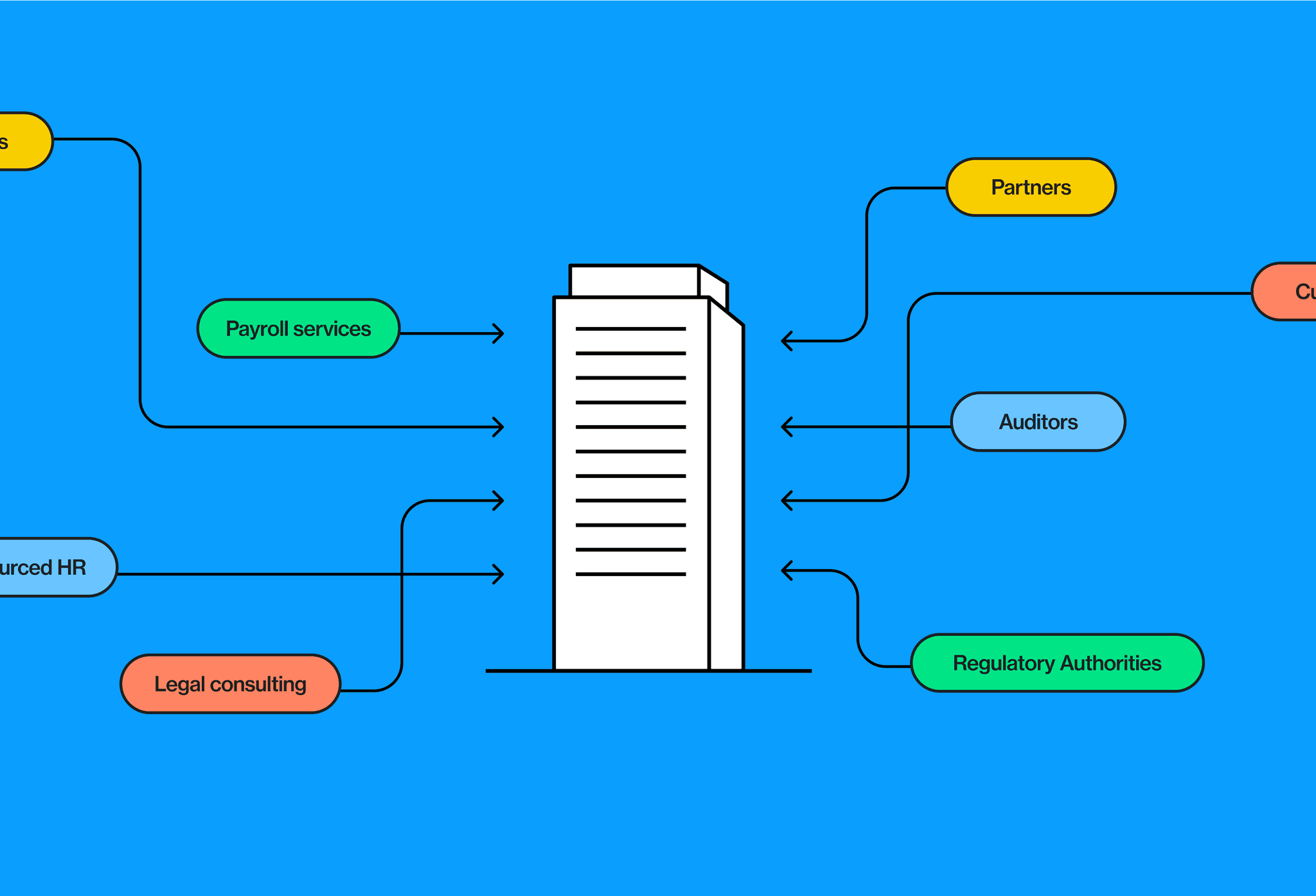What Makes Access for Non-employees So Challenging, and How Can You Solve It?
Oct 17, 2024
|
Linx Team
In today’s evolving business landscape, companies are increasingly reliant on a workforce that extends beyond traditional, full-time employees. Temporary workers, contractors, partners, and even vendors now play critical roles within organizations. This trend towards a hybrid workforce brings additional flexibility but also challenges, particularly in managing and governing the access of these non-employees. According to Gartner, 45% of security breaches involve non-employee users, underscoring the need for greater visibility and oversight in managing their access.
What makes access for non-employees so challenging?
Complex and diverse access needs - Unlike employees, non-employees often have unique and variable access needs. Contractors may require temporary access to specific systems, while vendors may need ongoing access to certain resources, albeit with fluctuating levels of permission. Governing this diverse set of access requirements can be complex, especially when access requests frequently change over time.
Limited visibility and oversight - Non-employees often exist outside of standard HR processes and systems, making it difficult to track their access lifecycle—onboarding, access management, and offboarding. Limited visibility into who has access to what increases the risk of unauthorized access, especially if permissions aren’t terminated promptly.
Increased security risks - Since non-employees are often not fully integrated into the organization’s culture or familiar with its security practices, they could inadvertently compromise sensitive information and neglect the security processes implmented in the organization. According to Forrester, 63% of breaches are due to compromised access credentials, including those of contractors and other third-party users.
Regulatory compliance challenges - Governing non-employee access is crucial not only for maintaining security but also for meeting regulatory requirements. Regulations like GDPR, HIPAA, and SOX mandate stringent controls over access to sensitive data. Without a structured process for managing non-employee access, organizations risk failing audits and incurring fines.
Operational inefficiencies - Manual access management processes can be time-consuming and error-prone. For organizations that rely heavily on non-employees, the administrative burden can become overwhelming, leading to delays in granting necessary access or, worse, lingering access for users who no longer need it. According to the Identity Management Institute, 51% of organizations experience operational inefficiencies due to fragmented and manual access management processes for non-employees, further stressing the need for automation.
The key to solving for non-employee access
To effectively govern non-employee access, organizations need a modern approach that goes beyond traditional access management capabilities and provides the following essential capabilities:
Discovery and management for non-employees - It’s crucial to keep non-employee accounts accurate and up-to-date. Without regular oversight, entitlement creep or orphaned accounts can occur—non-employees may accumulate unnecessary access over time, or accounts may remain active even after a contract ends. Having your solution serve as a dedicated repository for non-employee identities allows easy input and monitoring of relevant details while enforcing the necessary controls for close management.
Follow the principle of least privilege - No employee or non-employee should have more access than needed to get their job done. This is best achieved through role-based access, which provides permissions based on roles instead of individual entitlements. Roles can easily be applied to well-managed non-employees as well as employees.
Comprehensive lifecycle management - Manual provisioning can be labor intensive and take weeks before new employees have the access they need. This can lead to a frustrating experience for both the employee and non-employee and will cost the organization time and money. However, sloppy onboarding for the sake of speed can lead to security risks. While off boarding does not seem as time sensitive since no one is waiting on access, it is even more important from a security perspective.
Your solution should facilitate end-to-end access lifecycle management for non-employees, including automated onboarding, real-time access provisioning and de-provisioning, and tracking access over time. By automating these processes, organizations can ensure that access is consistently managed and immediately terminated when it is no longer needed.Automated access reviews and certifications - Periodic access reviews and certifications are critical for ensuring that non-employees only have access to the resources they need. Your solution should provide automated access review workflows that facilitate timely review and re-certification processes. This reduces the administrative burden on IT teams while ensuring compliance with security policies.
Conclusion
Effectively governing non-employee access requires a modern solution. As the workforce continues to evolve, organizations must prioritize non-employee access governance to maintain security, meet compliance requirements, and reduce operational inefficiencies. By investing in a solution that meets these needs, organizations can not only manage non-employee access effectively but also enable a more agile, secure, and compliant digital environment.
Ready to manage non-employee access?
Contact us today to learn how we can help.






